Being lost in the woods can be a frightening experience. Especially if you weren’t properly prepared when you first went on your deep woods hike or hunting trip. If you can’t immediately self-rescue, you need to keep your head about you, while assessing the available resources.
Every year I take a few wilderness retreats to check in with myself. Often bringing other people or my daughter with me for good company. Sometimes these people only have experience in car camping, and I try to expose them to survival skills that help expand their comfort zone.
One of the things we often discuss is how to read the plant life in the forest and how to make use of them in a pinch. This starts with looking for the following 10 plants that can help you if you ever get lost in the woods.
 I also plan to join the Wilderness Survival Academy. This program was launched by Nicole Apelian, Ph.D, biologist, herbalist, and survival skills instructor for over 30 years. It includes, from my point of view, incredibly valuable lessons and skills that can help you out a lot when it comes to outdoor survival. Some of the things taught are:
I also plan to join the Wilderness Survival Academy. This program was launched by Nicole Apelian, Ph.D, biologist, herbalist, and survival skills instructor for over 30 years. It includes, from my point of view, incredibly valuable lessons and skills that can help you out a lot when it comes to outdoor survival. Some of the things taught are:
- How to Filter Water Using a Sandwich Bag
- How to Make the Ultimate Fire Starter That Burns Like Hell
- How to Make a Wild Fridge
- How to Make a Wilderness Survival House
- How to Keep Mosquitoes Away With Cattails, a plant we talk about below
- What Happens If You Put Moss Over a Wound, which we also talk about below
- A whole lot more
I am going to join the academy next week because it is just $39, a huge discount of 85%. I just hope the discount will still be available.
See if the Wilderness Survival Academy is STILL available at an 85% discount here!
Highly recommended. Just like learning about the following 10 plants you should actually look for if you ever get lost in the woods.
Mature Patches of Moss
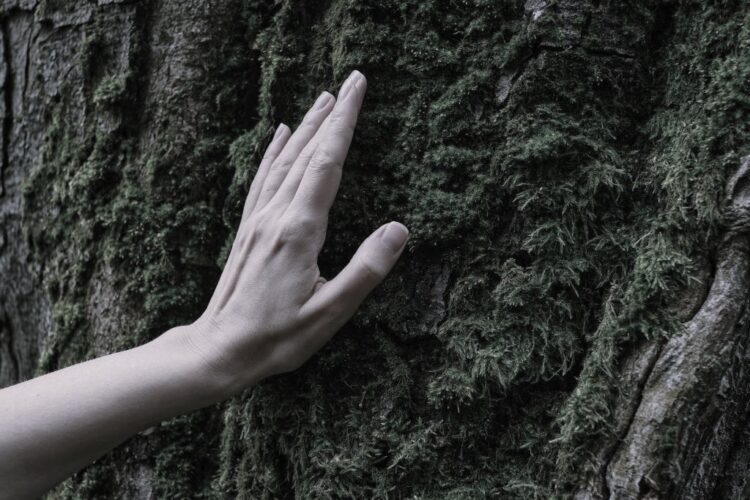 When you’re lost in the woods, moss can be used to help you find your way and can also be improvised as a water filter. However, you can’t just rely on the old saying “Moss always gathers on the north side of a tree.”
When you’re lost in the woods, moss can be used to help you find your way and can also be improvised as a water filter. However, you can’t just rely on the old saying “Moss always gathers on the north side of a tree.”
When you’re lost in the woods, you quickly find out that moss will grow anywhere that has sufficient shade. So, if you’re going to use moss to find north, you have to make sure the tree or rock in question is in a relatively exposed location. Then compare it to two other patches of moss to confirm your insight!
You can use sphagnum moss, which is typically found in damp, shaded areas as an improvised water filter. Just make sure the moss is free from contaminants like animal waste, and mold. If any mushrooms are growing nearby, you shouldn’t use that moss as a water filter.
You can then layer moss and other loose materials like sand in a bandana or even a section of your shirt. You can then pour the water through the moss filter to block out larger particles and neutralize the flavor of the water.
However, you’ll still need to boil the water or purify it. Bacteria and some protozoa can potentially pass through the moss filter and will need to be neutralized to make the water safe to drink.
Dandelion
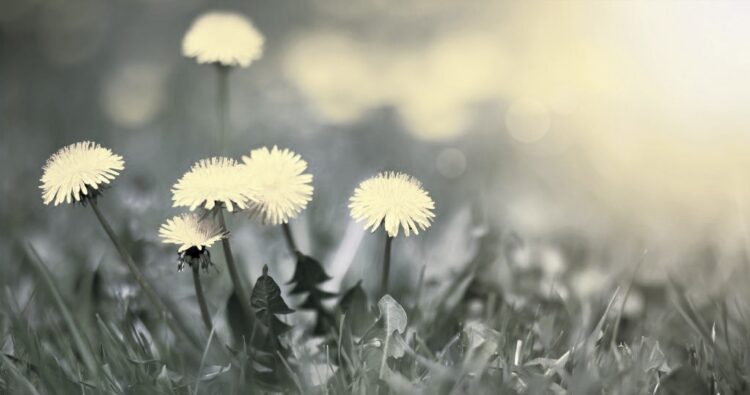 One of the great things about dandelions is that you can eat most of the plant. They grow all over the place, but you’re more likely to find them in a sunny clearing with low grass.
One of the great things about dandelions is that you can eat most of the plant. They grow all over the place, but you’re more likely to find them in a sunny clearing with low grass.
Dandelion leaves are rich in vitamins and can be eaten raw or added into foraged salads. You can use them just like spinach. However, they do have a slightly bitter taste that’s more reminiscent of arugula.
The flowers of a dandelion can be eaten raw or even put into baked goods. They’re a good source of vitamins A and B12 and antioxidants. My uncle used to add them to pancakes that he cooked on the head of a flathead shovel at his backwoods hunting camp.
Related: Harvesting and Using Dandelion Roots – The Natural Detoxifier
Dandelion roots are a great way to fill your belly when you’re hungry. However, they need to be boiled or roasted to make them palatable. You can even dry roast and grind them to make a coffee substitute.
Ideally, you want to target mature dandelions, as they have the deepest roots, that can extend down as much as 15 feet. This will give the most food value and belly-filling calories for the effort.
Cattails
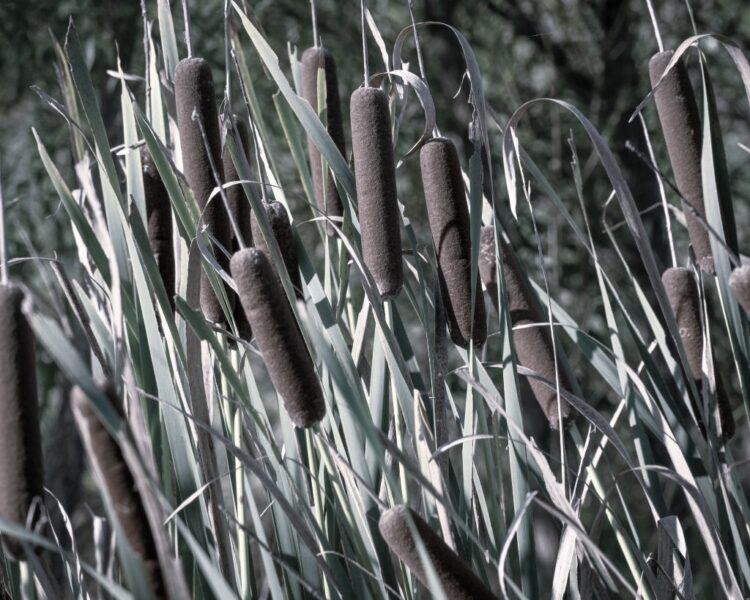 Young cattail shoots growing in marshlands can be eaten like spring asparagus, but once you get deep into summer, they become too fibrous to eat. The roots can be dried and ground into a type of flour that will just barely stick together enough to make a pancake.
Young cattail shoots growing in marshlands can be eaten like spring asparagus, but once you get deep into summer, they become too fibrous to eat. The roots can be dried and ground into a type of flour that will just barely stick together enough to make a pancake.
If you’re lost in the woods in late summer or early fall, you can use the fluffy head of cattails as a fire starter. To do this you need to aerate the head to maximize the air space to catch a spark.
Related: Delicious Recipes Using Cattails – “The Supermarket of the Swamp”
It will take a spark from a flint and steel very quickly but can fizzle out very quickly. So, expect it to take several attempts to get it right. Building a bed of very dry kindling under it will give you the best chance of getting a sustainable flame going.
Ramps (Wild Garlic)
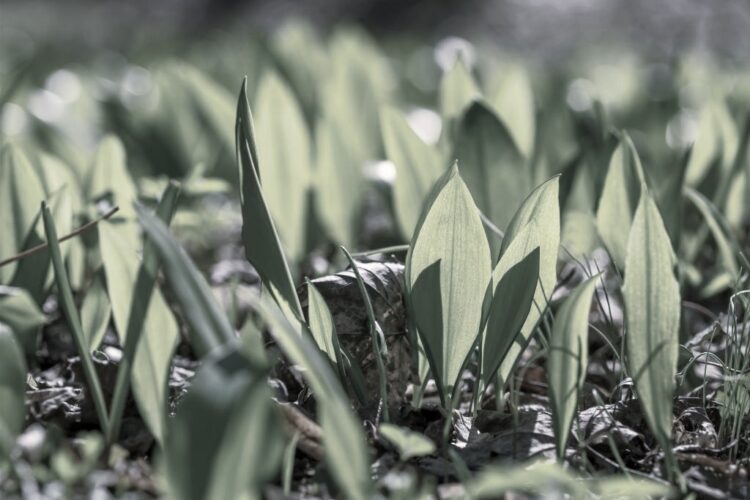 Finding a patch of ramps when you’re lost in the woods can fill your belly today, and potentially fill your wallet later. They’re sometimes referred to as wild garlic or wild leeks, and the entire plant is technically edible.
Finding a patch of ramps when you’re lost in the woods can fill your belly today, and potentially fill your wallet later. They’re sometimes referred to as wild garlic or wild leeks, and the entire plant is technically edible.
They’re easiest to find in spring and typically have broad, smooth, green leaves that emerge from the ground in pairs. The leaves are a vibrant green color and have a smooth texture. The leaves and the roots have a distinct garlic aroma to them.
There’s also a lot of demand for ramps at fine-dining seasonal restaurants. If you find a patch of them and you can reliably find your way back to that spot later, you could sell the ramps or their location to local foragers or restaurants.
Most of the people I know who know the location of a wild ramp patch guard that information with their lives.
Wild Strawberries
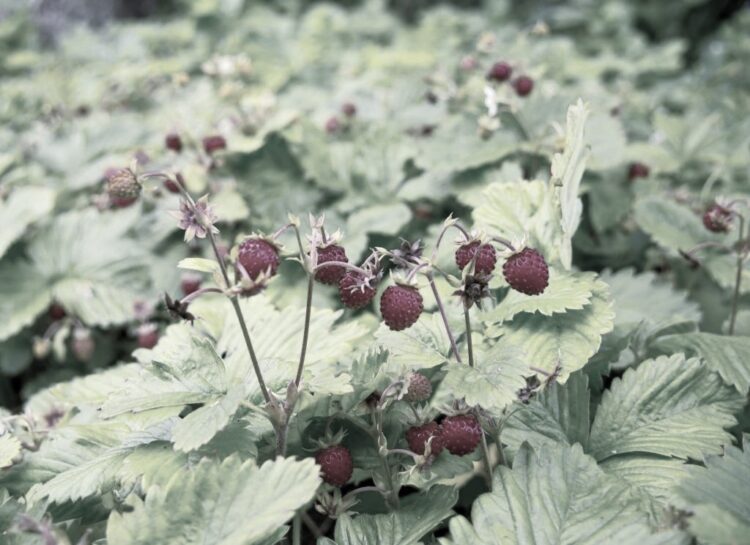 Wild strawberries offer a great little pick-me-up if you can find them while lost in the woods. The truth is the berries you find in the grocery store are massive versions of wild strawberries that have been selected for large fruit traits generation after generation.
Wild strawberries offer a great little pick-me-up if you can find them while lost in the woods. The truth is the berries you find in the grocery store are massive versions of wild strawberries that have been selected for large fruit traits generation after generation.
Wild strawberries look like a miniature version of their giant grocery store cousins. Except the berries are typically the size of a pencil eraser. You can even find them sometimes in shady areas at the edge of a field of the forest canopy.
Game trails used by deer and rabbits are your best bet for finding them, as these animals love to forage on them. You’re most likely to find them from mid-May to late June. After that, the summer temperatures tend to get too hot for these “June Bearing” plants.
Burdock
 Burdock is another great belly-filling plant to keep an eye out for if you’re ever lost in the woods. It has large leaves and edible roots that you can harvest and cook for a starchy, nutritious meal.
Burdock is another great belly-filling plant to keep an eye out for if you’re ever lost in the woods. It has large leaves and edible roots that you can harvest and cook for a starchy, nutritious meal.
However, this is more of a simmering application, rather than roasting over an open fire. Too much direct flame can burn the delicate starches in the core of the burdock stem.
Burdock root also has a lot of medicinal value. You can grind it up to make a tea that works as a diuretic that also has antioxidant and anti-inflammatory properties. It can even help ease stomach discomfort and can even help control blood sugar.
Chickweed
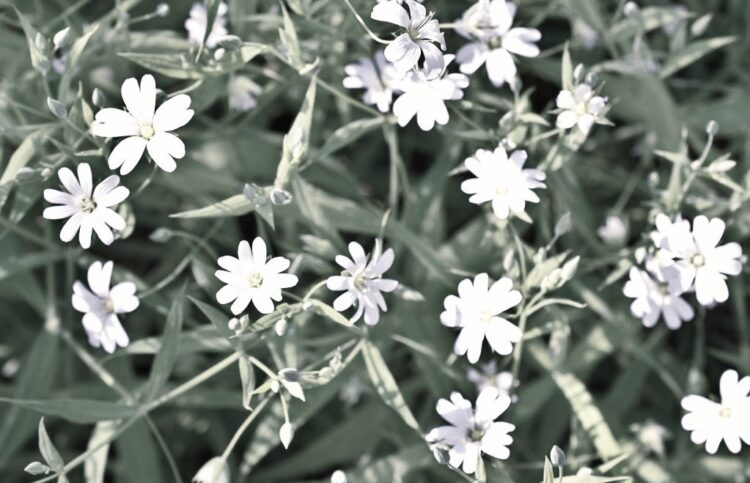 If you find chickweed when you’re lost in the woods, it can be eaten raw or added to a salad of wild forage. You can identify it by its small, oval leaves with pointed tips that are mostly smooth but slightly hairy. Mature chickweed will also produce tiny white flowers, which can further help you tell it apart from other wild greens.
If you find chickweed when you’re lost in the woods, it can be eaten raw or added to a salad of wild forage. You can identify it by its small, oval leaves with pointed tips that are mostly smooth but slightly hairy. Mature chickweed will also produce tiny white flowers, which can further help you tell it apart from other wild greens.
Chickweed is a rich source of vitamins A, B, and C. It also is high in dietary fiber, calcium, potassium, phosphorus, zinc, manganese, and iron. You can eat chickweed raw or steamed as a substitute for spinach.
It also has medicinal value for treating rheumatism, respiratory infections, and bladder infections. To tap into this medicinal value, it’s best to grind the chickweed with an improvised mortar and pestle and then brew the mashed paste into a potent tea.
Clover
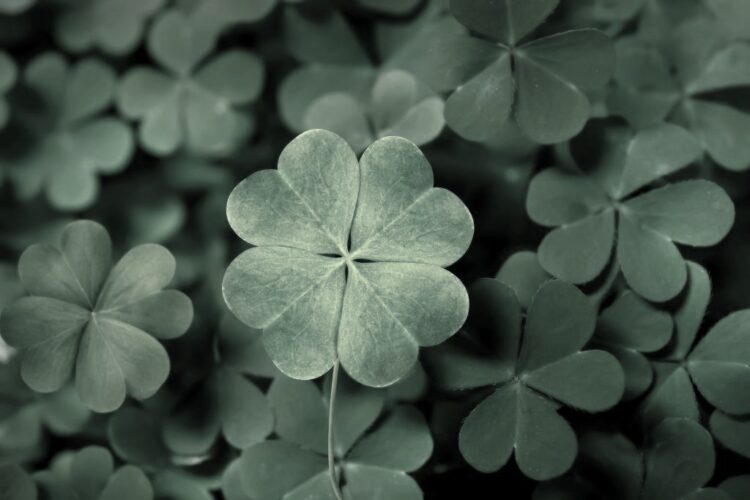 Clover is relatively common and easy to find. You can usually find it at the edge of a field or clearing and might have red or white flowers that are also edible.
Clover is relatively common and easy to find. You can usually find it at the edge of a field or clearing and might have red or white flowers that are also edible.
The leaves and flowers can be eaten as a rich source of vitamins A, C, E, and K, as well as minerals like calcium, magnesium, and potassium. Clover also contains isoflavones, which have potential antioxidant and anti-inflammatory properties.
Mature clover seeds can be ground into flour, which you can use to augment other foraged flours to create pancakes, wraps, or wilderness tortillas. This can be a great way to carry a snack or meal with you to eat out of hand.
Wild Raspberries, Blackberries and Huckleberries
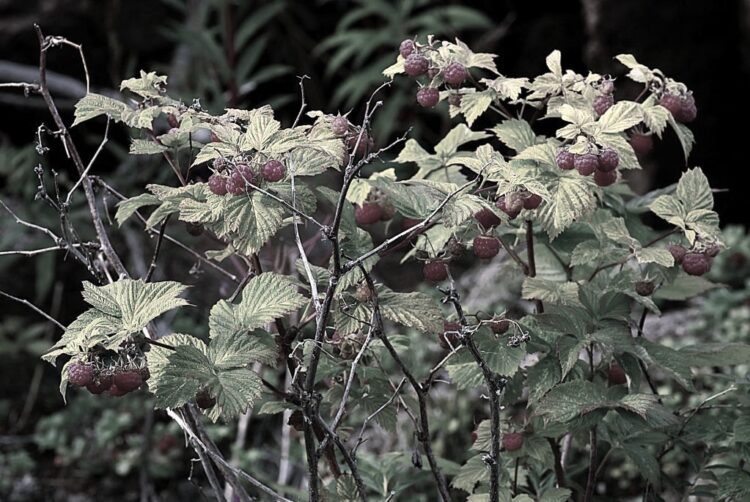 There are entire swaths of the West where people purposely get a little lost in the woods just in hopes of finding wild huckleberries, blackberries, and raspberry patches. They grow on canes, which sometimes have nasty thorns.
There are entire swaths of the West where people purposely get a little lost in the woods just in hopes of finding wild huckleberries, blackberries, and raspberry patches. They grow on canes, which sometimes have nasty thorns.
Ideally, you only want to eat the berries when they’re purple or blue. This both confirms that they’re safe to eat and fully ripe. As is, the berries are a great way to fill your belly and keep your blood sugar up for the energy you need to self-rescue.
You can also make tea out of raspberry leaves which have laxative qualities. This can be helpful if you’re stuck in the woods for a long time, as many people in prolonged survival situations suffer from painful constipation.
Elderberries
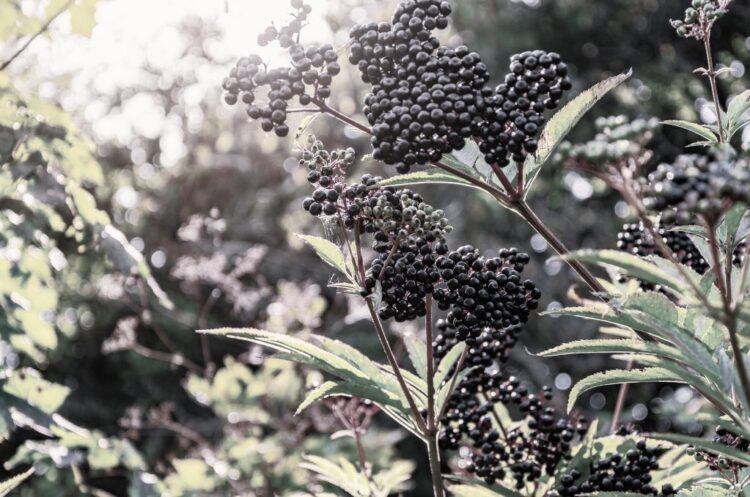 If you’re lost in the woods and your immune system needs a boost, you should keep your eyes out for elderberry bushes. The bushes make large clusters of flowers and dark purple berries, with leaves that oppose each other.
If you’re lost in the woods and your immune system needs a boost, you should keep your eyes out for elderberry bushes. The bushes make large clusters of flowers and dark purple berries, with leaves that oppose each other.
The flowers and the leaves have powerful antioxidants, vitamin C, and other compounds that help fortify the immune system. However, you shouldn’t eat them raw as their compounds can cause stomach upset. This is the elderberries’ natural defense against birds and rodents, who quickly learn not to eat too many of the berries on the bush.
Related: 10 Natural Antibiotics To Forage Before SHTF
Luckily these compounds break down very easily when simmered in water for 10 to 15 minutes. Just don’t let the water boil. It only needs to be around 140 to 150 degrees to break the chemical chains in the compounds, making elderberries better.
Final Thoughts
Survival in the wild isn’t just about skill—it’s about knowledge. Knowing which plants can nourish, heal, or even protect you could mean the difference between life and death. Whether you’re lost in the woods or simply preparing for the unexpected, identifying these ten plants gives you a critical edge. Nature provides everything needed to survive, but only for those who understand how to use it.
It is why I so often talk about the Amish. The Amish have no problem in the wild. They use what they find and their knowledge is unbeatable when it comes to living off the land, and conquering the wild as a whole. I highly recommend you learn more about their way of life and what they can do. For instance, in The Amish Ways you can learn about the three plants you need to make Amish Amoxicillin. Just an example of knowledge you should have when you go in the wild.
By taking the time to study these plants now, you’ll be prepared should you ever find yourself in a survival situation. The key to thriving in the wild is learning to work with nature rather than against it. So, the next time you step into the wilderness, take a closer look at the plants around you—you never know when that knowledge might save your life.
You may also like:
 How to Make Penicillin at Home
How to Make Penicillin at Home
What Happens If You Smoke Mullein? (Video)
10 Ways to Signal SOS in Morse Code and Other Methods

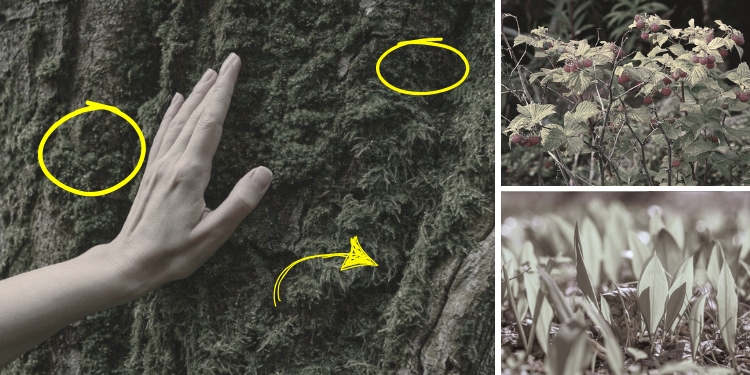













great article. but a little more color in the pictures would make them easier to identify.
Thank you for your feedback. We will definitely take that into account and will most likely add pictures with more color in them to help readers in the future.
“You can also make tea out of raspberry leaves which have laxative qualities. This can be helpful if you’re stuck in the woods for a long time, as many people in prolonged survival situations suffer from painful diarrhea.”
Please explain why one would take a laxative when you have diarrhea?
I would think they misspoke and meant constipation instead of diarrhea.
I can see that being stuck in a survival situation for a prolonged time can really mess with your biology.
Danee is right. The problem was referred to the editorial team and will be fixed as soon as possible.
It is blackberry leaves and fruits that will STOP diarrhea!
I have so much respect for Nicole. She’s had to overcome so many challenges in her life and yet she still has that beautiful dazzling smile. I know all about chronic pain. Puts a real damper on life.
Another good reminder! I still watch reruns of Les Stroud’s “Wild Harvest” He starts all his shows with the caveat “Read your books, look online and seek out a local expert to teach you. Great call with Nichole Apelian!
The good side of being a prepper…..
I think the picture of clover is sorrel….? But still o k to nibble on .
We can confirm it is clover.
I did not know there was a heart shaped leaf ,4 leaf clover…..it’s probably worth millions…remember the customer is always right…
must be A.I. generated……
Regular staff must be on vacation….lol
Oh…cra- i forgot…lucky charms…my apologies….☮
It is definitely rare but the image is NOT AI generated.
We have numerous patches of clover around the house. We find 4 leaf clover all the time in them.
Really….to tell you the truth i guess i never really looked much for four leaf clover….are the leafs heart shaped ? Then its a wood sorrel….lobed…fine toothed edges….a lighter color crescent on the middle of leaf…three leafs…. it’s clover. Anyway i heard that learning the proper way to eat grass is the #1 survival food in a pinch….for a beginner prepper…I’ve also seen triple rainbows…..I’ll need a new defense for the up and coming Dire Wolf pups…..The dems will probably make the Earth their sanctuary….were doomed .
The great thing about being lost in the wilderness is you don’t have to worry about starving, the main causes of death are hypothermia, heat stroke, falls, and dehydration.
When i was a little kid i picked up the common name of …Black Caps….for the picture of the wild raspberries in my neck of the woods…brings back memories of fighting nettles with sticks ….making spears from bracken ferns….and getting long leaf plantain seed pods stuck between my bare foot toes …..
My granndmother, and now I, make a tea from dried elderberry flowers. Pick the flowers and take the stems off. Dry the flowers for a day or three, putting a cloth on top so they do not blow away. It makes a very tasty tea that does not even require sweetener.
Red sumac berries make a delicious tangy tea rich in vitamin c.
You have to learn …fire….water….air….some bush craft….to make the tea which wil be useful during TEOTWAKI…..
TEOTWAWKI….
Clover in my yard does not look like that …Maybe in the mystical land of Ireland, yer right las …definitely rare….Thanks